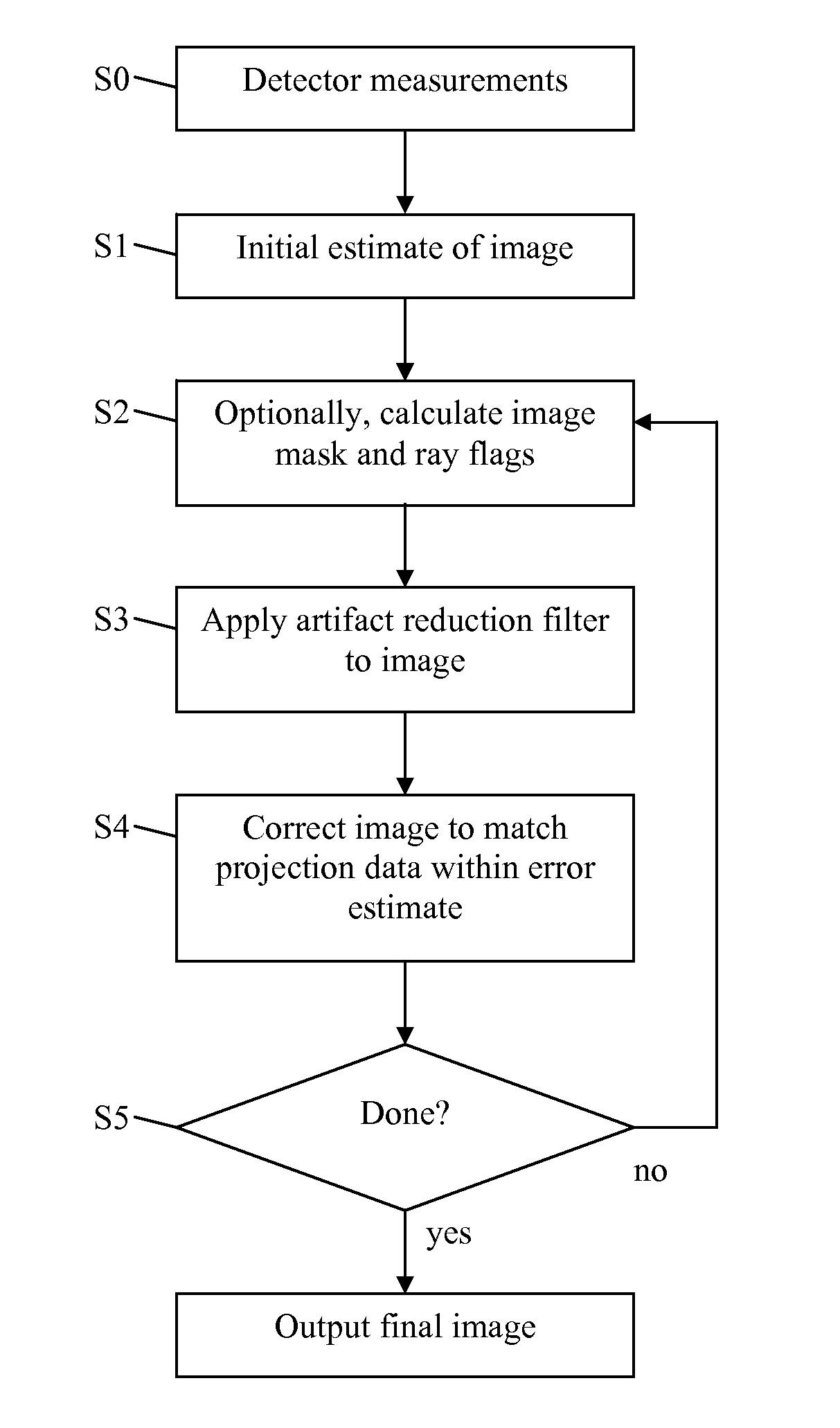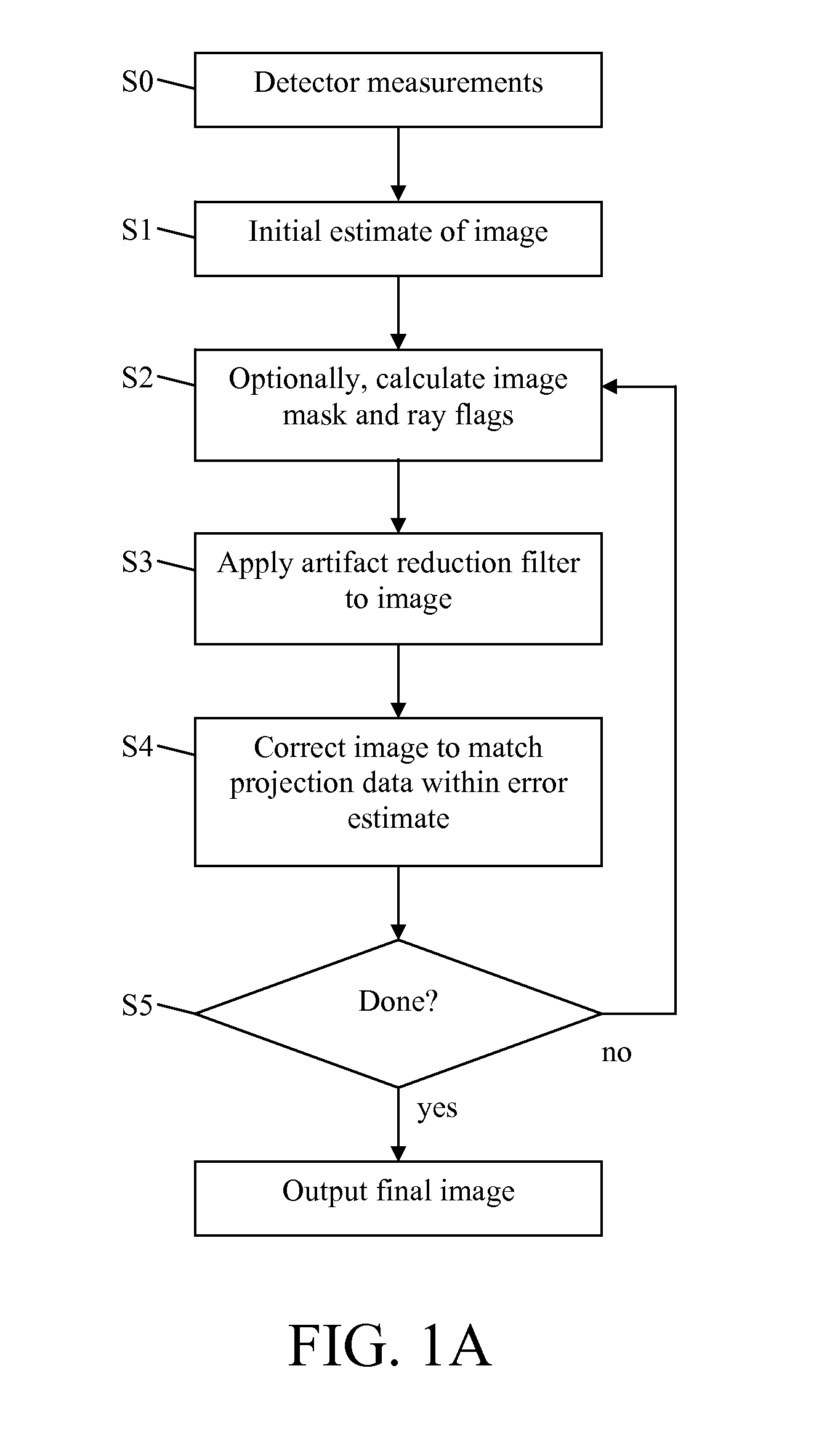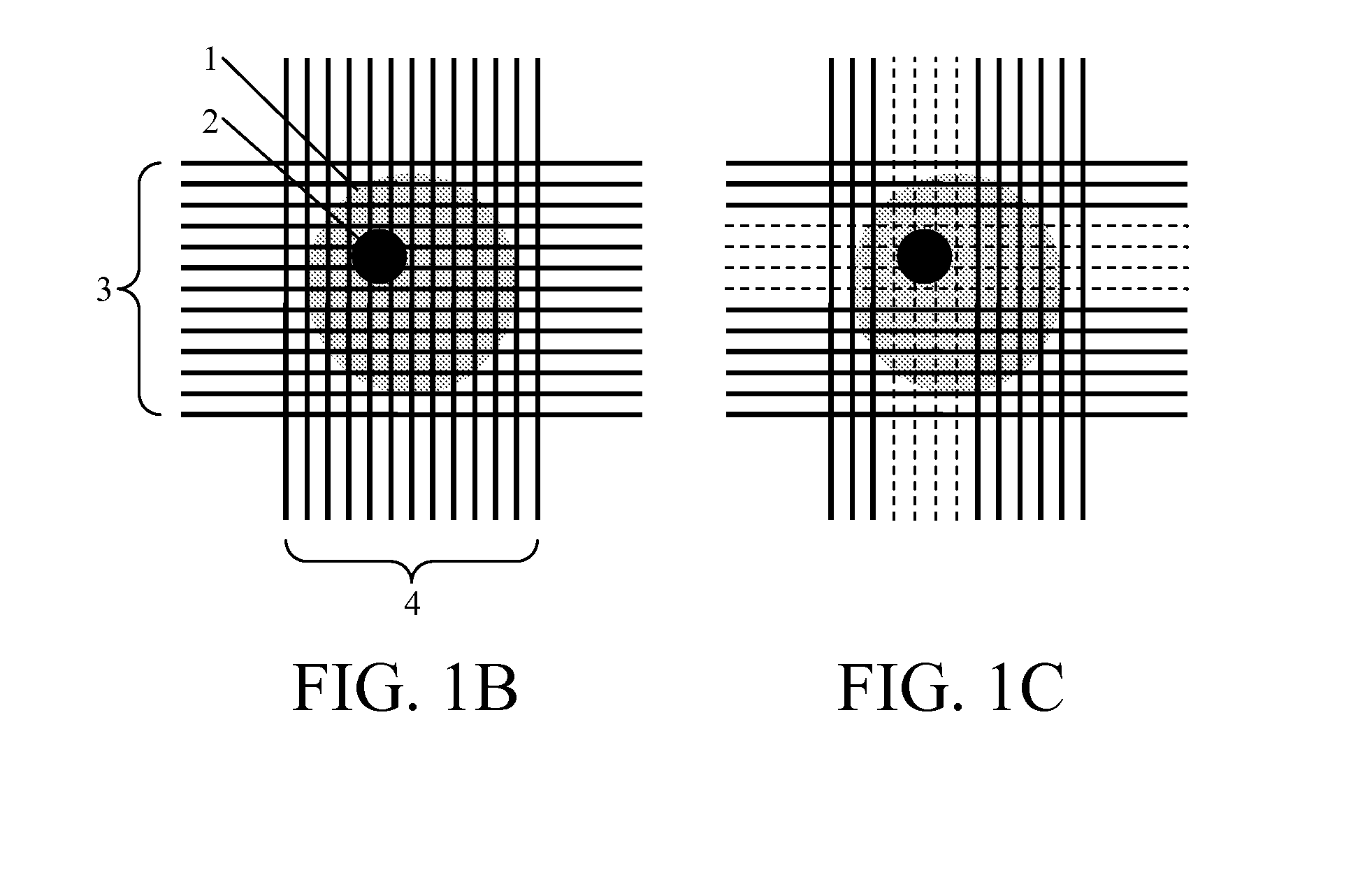Methods and apparatus for reducing artifacts in computed tomography images
a computed tomography and computed tomography technology, applied in material analysis using wave/particle radiation, instruments, nuclear engineering, etc., can solve the problems of blurred local variations in density that are not supported by projection data, less projection data, and less accurate ray sums. , to achieve the effect of suppressing edge artifacts and good images
- Summary
- Abstract
- Description
- Claims
- Application Information
AI Technical Summary
Benefits of technology
Problems solved by technology
Method used
Image
Examples
Embodiment Construction
[0014]A flowchart showing one embodiment is illustrated in FIG. 1A and described in detail below.
[0015]Step S0. Projection data are obtained from a plurality of detectors configured to detect transmitted, emitted, or reflected photons, other particles, or other types of radiated energy. These measurements are made by a CT, PET, SPECT, or other type of scanner.
[0016]Step S1. The projection data can be pre-processed to account for beam-hardening, scatter, refraction, diffraction, or other phenomena. Furthermore, low photon counts from nearby rays can be averaged together to reduce the error. The projection data can be interpolated to generate a higher resolution data set. The projection data can be filtered to account for cross-talk between the detectors, or to reduce noise. Many other pre-processing techniques are known to those in the art.
[0017]The initial estimate of the CT image is then generated by an existing CT reconstruction method, such as filtered backprojection. The artifac...
PUM
| Property | Measurement | Unit |
|---|---|---|
| density | aaaaa | aaaaa |
| densities | aaaaa | aaaaa |
| CT reconstruction | aaaaa | aaaaa |
Abstract
Description
Claims
Application Information
 Login to View More
Login to View More - R&D
- Intellectual Property
- Life Sciences
- Materials
- Tech Scout
- Unparalleled Data Quality
- Higher Quality Content
- 60% Fewer Hallucinations
Browse by: Latest US Patents, China's latest patents, Technical Efficacy Thesaurus, Application Domain, Technology Topic, Popular Technical Reports.
© 2025 PatSnap. All rights reserved.Legal|Privacy policy|Modern Slavery Act Transparency Statement|Sitemap|About US| Contact US: help@patsnap.com



